Ditapis dengan
E-book Music and Spirituality : Theological Approaches, Empirical Methods, an…
The composer Sir James MacMillan has called music ‘the most spiritual of the arts’, and for many people, both religious and non-religious alike, this rings true.1 But what do people mean by ‘music’ and ‘spiritual’ in this context, and what is the nature of their perceived relationship? Do certain kinds of music more readily afford spiritual experiences than others? What …
- Edisi
- -
- ISBN/ISSN
- 9781805113041
- Deskripsi Fisik
- 480 hlm
- Judul Seri
- -
- No. Panggil
- 781.7 ARN m
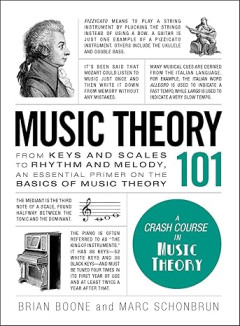
E-book Music Theory 101: From Keys and Scales to Rhythm and Melody, an Essent…
From classical to hard rock, and jazz to hip hop, music is constantly evolving, but many of the basics have stayed the same. Understanding these basics is key to becoming a successful musician and well-rounded music lover. Music Theory 101 covers everything novice musicians and lifelong learners need to know, including: -How to read sheet music -Understanding the construction of chords a…
- Edisi
- -
- ISBN/ISSN
- 9781507203668
- Deskripsi Fisik
- 276 halaman
- Judul Seri
- -
- No. Panggil
- 780.1 BOO m
E-book Coming to Terms with Our Musical Past : An Essay on Mozart and Moderni…
More than two hundred years ago, a theater journal from Hamburg reviewed a performance of The Marriage of Figaro. Its author was probably Bernhard Anselm Weber, a composer and music director. The evening’s entertainment left a deep impression on Mozart’s fellow musician:It is just as one would expect from Mozart: great and beautiful, full of new ideas a…
- Edisi
- -
- ISBN/ISSN
- 9781787442849
- Deskripsi Fisik
- 223 hlm
- Judul Seri
- -
- No. Panggil
- 780.1 GOE c
E-book Radiation Sounds : Marshallese Music and Nuclear Silences
On March 1, 1954, the United States detonated its most power ful thermo-nuclear weapon, code- named “ Castle Bravo,” at Bikini Atoll in the Marshall Islands. Situated to the southeast of Bikini, the populations of Rongelap Atoll, including people residing on Ailingnae and Utrik Atolls, watched in confusion as the sun seemed to rise in the west. On Utrik, Rijen Michael, eigh teen years ol…
- Edisi
- -
- ISBN/ISSN
- 9781478021919
- Deskripsi Fisik
- 313 hlm
- Judul Seri
- -
- No. Panggil
- 780.2 SCH r
E-book Rock This Way : Cultural Constructions of Musical Legitimacy
Fox television show Glee (2009–15), a musical comedy about a crew of lov-able misfits and their high school glee club, was highly popular. The show had good ratings, attracted a large and intense fandom, enjoyed widespread merchandise sales—and produced huge music sales. Over the course of six seasons of cast recordings, Glee placed more than two hundred songs on the Billboard Hot 100, near…
- Edisi
- -
- ISBN/ISSN
- 9780472903627
- Deskripsi Fisik
- 241 hlm
- Judul Seri
- -
- No. Panggil
- 781 STA r
E-book Drumming in Bhaktapur : Music of the Newar People of Nepal
The Newar people of the Kathmandu Valley and beyond are an ethnic group of Nepal that absorbed many cultural influences from South Asia over the past two thousand years. Their Newari language belongs to the Tibeto-Burmese language group. Their admirable musical culture saw its heyday during the rule of the later Malla kings of Bhaktapur, Patan and Kathmandu (13th to 18th centu…
- Edisi
- Vol. 1
- ISBN/ISSN
- 9783968222295
- Deskripsi Fisik
- 427 hlm
- Judul Seri
- -
- No. Panggil
- 781.69 WEG d
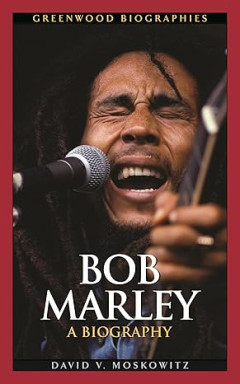
E-book Bob Marley: A Biography (Greenwood Biographies)
Bob Marley was the first, and possibly the only, superstar to emerge from the Third World. Although he lived a short life, only 36 years, Bob penned an enormous quantity of songs, pioneering a new reggae rhythm and sound that was distinctly Jamaican. An expert lyricist who could more than hold his own with any contemporary hip-hop word slinger, Bob crafted emotionally powerful chains of words t…
- Edisi
- -
- ISBN/ISSN
- 9780313338793
- Deskripsi Fisik
- 149 halaman
- Judul Seri
- -
- No. Panggil
- 927.8 MOS b
E-book Dancing Youth : Hip Hop and Gender in Late Socialist Vietnam
Hip hop is from the United States. So, in Vietnam they copy from gangsterrap videos, right?” “Hip hop is violent and misogynistic. So, why should it bea good thing for young Vietnamese people to engage with hip hop?” These aresome of the many concerned questions that I am often confronted with whentellingpeopleaboutmyresearchonyouthandhiphopinVietnam.Whatthesequestions imply, among many o…
- Edisi
- -
- ISBN/ISSN
- 9783839456347
- Deskripsi Fisik
- 277 hlm
- Judul Seri
- -
- No. Panggil
- 781.649 KUR d
E-book Verdi in Victorian London
Giuseppe Verdi’s first success was Nabucco, given in Milan on 9 March 1842. Although this was Verdi’s third opera,1 the composer referred to it as the first milestone in what would become a life-long, successful career. “With Nabucco,” he declared to Count Opprandino Arrivabeneyears later, “my career can be said to have begun.”2 However, when Verdi made his f…
- Edisi
- -
- ISBN/ISSN
- 9781783742134
- Deskripsi Fisik
- 362 hlm
- Judul Seri
- -
- No. Panggil
- 781.5 ZIC v
E-book When Music Takes Over in Film
A cold and grey day in an urban environment, monotony reigns and dictates the mundane lives of the city’s inhabitants. A boy wants to express his love for the girl next door. Timidly at first he starts to sing and an orchestral accompaniment slowly rises as the girl joins him in song and they begin to dance. Here the environment changes,…
- Edisi
- -
- ISBN/ISSN
- 9783030891558
- Deskripsi Fisik
- 265 hlm
- Judul Seri
- -
- No. Panggil
- 781.54 AVI w
E-book Here for the Hearing : Analyzing the Music in Musical Theater
Twenty years ago, very few music scholars examined Broadway musicals. If musicologists were a bit slow to approach the musical theater reper-toire (and they were), theorists and analysts arrived—and are only now arriving—more than fashionably late to the party. We hope that this vol-ume loudly announces that we are here.Music theorists care about musical theater. We kn…
- Edisi
- -
- ISBN/ISSN
- 9780472903535
- Deskripsi Fisik
- 311 hlm
- Judul Seri
- -
- No. Panggil
- 781.63 BLU h

E-book Performing by the Book?: Musical Negotiations between Text and Act
The challenges and limits for musicians dealing with texts. To perform a musical score implies the transformation of a symbolically coded text into vibrant sound. In Performing by the Book? a carefully selected cadre of artist-researchers dissects this delicate act in critical ways. Offering first-hand insights into the notational, structural and interpretative challenges faced by musicians in …
- Edisi
- -
- ISBN/ISSN
- 9789461665591
- Deskripsi Fisik
- 212 halaman, ilus.
- Judul Seri
- -
- No. Panggil
- 780.72 FOR p

E-book A God of Time and Space : New Perspectives on Bob Dylan and Religion
The present volume is a collection of essays aiming to shed new light on different aspects of the role of religion in Bob Dylan’s artistic output. The eight authors are all from Scandinavia, seven from Norway and one from Denmark. Norwegian Dylan-scholars will always remember when Dylan, at a concert in Oslo in 1998, compared Norway to where he grew up in Minnesota: “Well, I…
- Edisi
- -
- ISBN/ISSN
- 9788202616540
- Deskripsi Fisik
- 239hlm
- Judul Seri
- -
- No. Panggil
- 781.71 AAS a

E-book Waltzing Through Europe : Attitudes towards Couple Dances in the Long …
Round dances are a group of dances that rose to fame with the Waltzaround 1800 and stayed in fashion until the end of the nineteenth century. Although they had lost their fashionable status by the twentieth century, some of these dances remained popular in many countries alongside the new African-American1 dances such as the Tango and Foxtrotthroughout the twent…
- Edisi
- -
- ISBN/ISSN
- 9781783747344
- Deskripsi Fisik
- 497 hlm
- Judul Seri
- -
- No. Panggil
- 784.1 BAK w
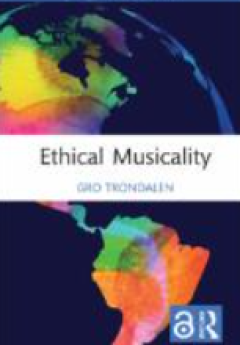
E-book Ethical Musicality
Ethical problems, dilemmas, and unpleasant experiences arise in real-life settings. There may be a friend calling for advice in a difficult situation or when waiting at a bus stop seeing a person losing balance and hitting their head when collapsing. What is sensible advice, and what is the right thing to do in the specific setting? Ethics unfolds as lived experiences in our daily…
- Edisi
- -
- ISBN/ISSN
- 9781003218524
- Deskripsi Fisik
- 106 hlm
- Judul Seri
- -
- No. Panggil
- 780.1 TRO e
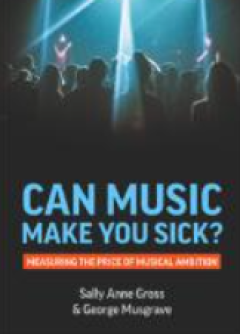
E-book Can Music Make You Sick? : Measuring the Price of Musical Ambition
‘The music industry’ is commonly understood as a singular entity that is often portrayed as a place of shared concerns and goals. However, as many observers and academics have pointed out, this singular term is misleading and the very idea of a united place belies the reality which is ridden with tension and full of competing interests and industries (see Sterne, 2014). It is withi…
- Edisi
- -
- ISBN/ISSN
- 9781912656615
- Deskripsi Fisik
- 200 hlm
- Judul Seri
- -
- No. Panggil
- 781.63 GRO c
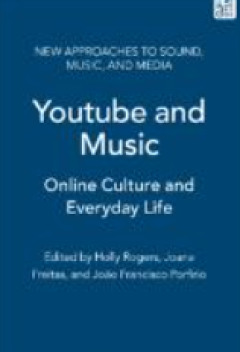
E-book YouTube and Music : Online Culture and Everyday Life
‘All right, so here we are in front of the elephants.’ This is the opening sentence of the first video ever uploaded to YouTube.1 What started in 2005 as an online platform for the upload of ‘homemade videos’ and the sharing of ‘ordinary people’s lives’ quickly became the nucleus of an intricate web of audiovisual interactions that reached through and beyond cyberspace. The year 2…
- Edisi
- -
- ISBN/ISSN
- 9781501387296
- Deskripsi Fisik
- 329 hlm
- Judul Seri
- -
- No. Panggil
- 780.2 FRE y
E-book The Race of Sound : Listening, Timbre, and Vocality in African America…
Whether the vocalizer is heard over the radio or the phone, as part of a movie soundtrack or in person—positioned far away and therefore hard to see or speaking right in front of the listener—the foundational question asked in the act of listening to a human voice is Who is this? Who is speaking? Regardless of whether the vocalizer is visible or invisible to the l…
- Edisi
- -
- ISBN/ISSN
- 9780822372646
- Deskripsi Fisik
- 289 hlm
- Judul Seri
- -
- No. Panggil
- 781.2 EID t
E-book How Hip Hop Became Hit Pop : Radio, Rap, and Race
In July 1992, Seattle rapper Sir Mix-a-Lot topped the Billboard “Hot 100” chart with his insatiably catchy hit “Baby Got Back.” His ode to ladies who “look like those rap guys’ girlfriends” wasn’t anywhere near the only rap song that year to do well on the “Hot 100,” which recorded the most popular songs in the United …
- Edisi
- -
- ISBN/ISSN
- 9780520383937
- Deskripsi Fisik
- 227 hlm
- Judul Seri
- -
- No. Panggil
- 781.649 COD h
E-book Make It New : Reshaping Jazz in the 21st Century
Organizing this book into chapters that read like magazine profiles makes it more digestible for readers and allows them to read the chapters in whichever order they prefer. Goldberg’s book was structured that way, as was series editor Martin Williams’s similarly readable Jazz Masters of New Orleans (1967). More challenging was deciding which artists to include. I made a…
- Edisi
- -
- ISBN/ISSN
- 9781643150055
- Deskripsi Fisik
- 304 hlm
- Judul Seri
- -
- No. Panggil
- 781.65 BEU m
E-book Music : Arts Education
The arts are organised expressions of ideas, feelings and experiences in images, in music, in language, in gesture and in movement. They provide for sensory, emotional, intellectual and creative enrichment and contribute to the child’s holistic development. Much of what is finest in society is developed through a variety of art forms which contribute to cultural ethos and to a sense of well-b…
- Edisi
- -
- ISBN/ISSN
- -
- Deskripsi Fisik
- 103 hlm
- Judul Seri
- -
- No. Panggil
- 780.7 GOV m
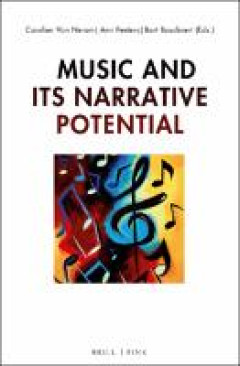
E-book Music and its Narrative Potential
“Music and its Narrative Potential” is a book about musical stories. It is a collection of thoughts on how music evokes narratives through its own medium-specific strategies. This book is a versatile consideration of narratives expressed through music. There are several threads that flow and recur through its different chapters, namely contemporary music, interdisciplinary approaches, conte…
- Edisi
- -
- ISBN/ISSN
- 9783846767726
- Deskripsi Fisik
- 335 halaman
- Judul Seri
- -
- No. Panggil
- 780.72 BOU m
E-book The Chamber Musician in the Twenty-First Century
In recent research, there has been growing emphasis on the collaborative, social, and collective nature of musical behaviour and practices. Among the emerging hypotheses in this connection are the idea that listening to music is always listening together and being with the other; that music making is a matter of intercorporeality, mutuality, and emphatic attunement; and that creative agency in …
- Edisi
- -
- ISBN/ISSN
- 9783038975632
- Deskripsi Fisik
- 334 hlm
- Judul Seri
- -
- No. Panggil
- 785 CAM t
E-book The Performance Practice of Electroacoustic Music : The Studio di Fono…
fter more than 60 years, the term performance practice in the context of elec-troacoustic music seems to be established in professional circles.1 However, the notion of the interpretation of electroacoustic music, at least of its purely electronic, non-instrumental parts, is not self-evident for experienced audiences and even for professional musicians who are not familia…
- Edisi
- -
- ISBN/ISSN
- 9783034331197
- Deskripsi Fisik
- 158 hlm
- Judul Seri
- -
- No. Panggil
- 781.5 BEN t
E-book Musician Vol. 1
Music notation is a symbolic language that is designed to illustrate the melodic, harmonic, and rhythmic elements of music. Pitch refers to the relative highness or lowness of a performed sound. In western tonal music, these pitches have designated note names C, D, E, F, G, A and B that occur in ascending and descending fashion. In music notation, note symbols are used to describe the particula…
- Edisi
- -
- ISBN/ISSN
- -
- Deskripsi Fisik
- 461 hlm
- Judul Seri
- -
- No. Panggil
- 781.2 NTC m
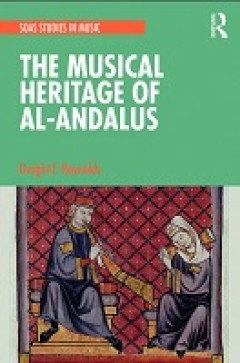
E-book The Musical Heritage of Al-Andalus
The Musical Heritage of Al-Andalus is a critical account of the history of Andalusian music in Iberia from the Islamic conquest of 711 to the final expulsion of the Moriscos (Spanish Muslims converted to Christianity) in the early 17th century. This volume presents the documentation that has come down to us, accompanied by critical and detailed analyses of the sources written in Arabic, Old Cat…
- Edisi
- -
- ISBN/ISSN
- 9781000289527
- Deskripsi Fisik
- 272 halaman
- Judul Seri
- -
- No. Panggil
- 780.72 REY t
E-book The Classical Music Book: Big Ideas Simply Explained
- Edisi
- -
- ISBN/ISSN
- -
- Deskripsi Fisik
- 354 halaman, ilus.
- Judul Seri
- -
- No. Panggil
- 780.166 COL i
- Edisi
- -
- ISBN/ISSN
- -
- Deskripsi Fisik
- 354 halaman, ilus.
- Judul Seri
- -
- No. Panggil
- 780.166 COL i
E-book The Legacy of Elise Hall : Contemporary Perspectives on Gender and the…
It was in November 2021 that we shared the intriguing idea of co-editing a book project on the historical figure of saxophonist Elise Hall. After sending several messages back and forth, we finally found a mutually agreeable time for a video meeting. Kurt was at his home in Brussels, while Adrianne was in Chicago, a sev-en-hour time difference. We had first met at a conference in 2016, “Prepo…
- Edisi
- -
- ISBN/ISSN
- 9789461665478
- Deskripsi Fisik
- -
- Judul Seri
- -
- No. Panggil
- 780.904 BER t
E-book Hip-hop History : From the Streets to the Mainstream
Hip hop is more than music; it’s a cultural movement that incorporates different elements of art. Four foundational elements characterize hip hop culture. The original four main pillars of hip hop include DJing/turntablism, MCing/rapping, Bboying/breaking, and visual/graffiti art. These forms of expression have also developed into further subcultures with lasting legacies. The intersection of…
- Edisi
- -
- ISBN/ISSN
- -
- Deskripsi Fisik
- 14 hlm
- Judul Seri
- -
- No. Panggil
- 781.649 ROR h
E-book History of Rock & Roll 1950
By the mid-1950s, rock and roll had become wildly popular across the color line. A number of factors contributed: This was in part because white teens secretly tuned in to black radio stations to hear the new sound. Scrambling to fill airtime due to increasing competition from television, white radio networks were more willing to turn to music which was outside of the mainstream, including up-a…
- Edisi
- -
- ISBN/ISSN
- -
- Deskripsi Fisik
- 45 hlm
- Judul Seri
- -
- No. Panggil
- 781.66 SHE h
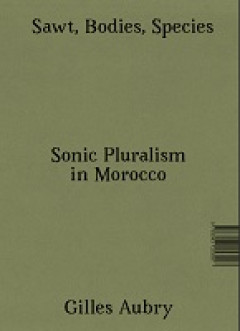
E-Book Sawt, Bodies, Species: Sonic Pluralism in Morocco
How do the Moroccan sound archives of the writer Paul Bowles from the 1970s sound today with the musicians of that time? What does an earthquake in Agadir have to do with a Japanese science fiction film? What sound do stones have? And what do we learn about environmental pollution by listening to the agar agar algae? Drawing on critical sound studies, ethnographic research, and artistic practic…
- Edisi
- -
- ISBN/ISSN
- 9783943253597
- Deskripsi Fisik
- 153 halaman
- Judul Seri
- -
- No. Panggil
- 780.72 AUB s
E-book American Popular Music
Over the past 100 years or so, American popular music has gained acceptance at home and abroad. It has become the music that many, especially the young and young at the heart, listen to virtually all of the time. In the United States, the vast array of popular music forms are aired by more than 90 percent of all radio stations. Internationally, both American versions of popular songs and versio…
- Edisi
- -
- ISBN/ISSN
- 9781580379830
- Deskripsi Fisik
- 99 hlm
- Judul Seri
- -
- No. Panggil
- 781.63 AMM a
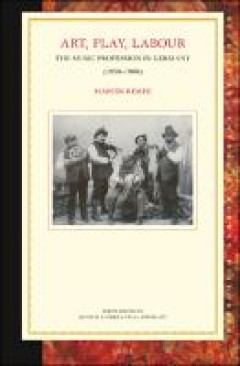
E-Book Art, Play, Labour: the Music Profession in Germany (1850–1960)
Germany is considered a lauded land of music: outstanding composers, celebrated performers and famous orchestras exert great international appeal. Since the 19th century, the foundation of this reputation has been the broad mass of musicians who sat in orchestra pits, played in ensembles for dances or provided the musical background in silent movie theatres. Martin Rempe traces their lives and …
- Edisi
- -
- ISBN/ISSN
- 9789004542723
- Deskripsi Fisik
- 486 halaman
- Judul Seri
- -
- No. Panggil
- 780.9 REM a
E-book Merry Christmas Songbook
Christmas is a special time. A Time of rejoicing, of solemn thanksgiving, of gift-giving, of pleasures both modern and traditional, of feasting and of being together with family and friends. And christmas is a time of special music. What better way to celebrate the birthday of Jesus than to join together and raise our voices in the special songs of Christmas - or to tune our musical songs of Ch…
- Edisi
- -
- ISBN/ISSN
- 0895771055
- Deskripsi Fisik
- 254 hlm
- Judul Seri
- -
- No. Panggil
- 781.71 SIM m

E-Book George Rochberg, American Composer: Personal Trauma and Artistic Creat…
- Edisi
- -
- ISBN/ISSN
- 9781787444461
- Deskripsi Fisik
- 254 halaman
- Judul Seri
- -
- No. Panggil
- 780.72 WLO g
- Edisi
- -
- ISBN/ISSN
- 9781787444461
- Deskripsi Fisik
- 254 halaman
- Judul Seri
- -
- No. Panggil
- 780.72 WLO g

E-Book Richard Wagner's Essays on Conducting: A New Translation with Critical…
The first modern English edition of Richard Wagner's essays on conducting, extensively annotated, with a critical essay on Wagner as conductor: his aesthetic, practices, vocabulary, and impact. Richard Wagner was one of the leading conductors of his time. Through his disciples Hans von Bülow, Hans Richter, Anton Seidl, Felix Mottl, Arthur Nikisch, and their many notable protégés, a Wagnerian…
- Edisi
- -
- ISBN/ISSN
- 9781800101890
- Deskripsi Fisik
- 324 halaman
- Judul Seri
- -
- No. Panggil
- 780.72 WAL r
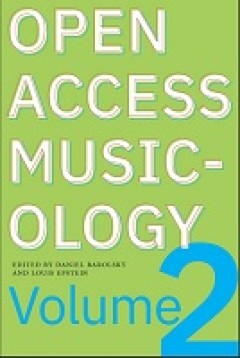
E-Book Open Access Musicology: Volume 2
Open Access Musicology (OAM) publishes peer-reviewed, scholarly essays primarily intended to serve students and teachers of music history, ethno/musicology, and music studies. The constantly evolving collection ensures that recent research and scholarship inspires classroom practice. OAM essays provide diverse and methodologically transparent models for student research, and they introduce diff…
- Edisi
- -
- ISBN/ISSN
- 9781643150499
- Deskripsi Fisik
- 202 halaman
- Judul Seri
- -
- No. Panggil
- 780.1 EPS o

E-book Immaculate Sounds
In Catholic doctrine, the Immaculate Conception of the Virgin Mary is the belief that Mary, the mother of Christ, was exempt from original sin from the moment of her conception, and thereby a co-redeemer alongside her son. Praise for this complicated devotion took place in Europe throughout the medieval period and resounded in the Americas with the founding of the first convent in Mexico City u…
- Edisi
- -
- ISBN/ISSN
- 9780197621899
- Deskripsi Fisik
- 361 halaman
- Judul Seri
- -
- No. Panggil
- 780.1 FAV i
E-book Railways & Music
When the Stockton & Darlington Railway opened in 1825, it was the first steam-powered railway to carry passengers. Since then there has been no shortage of music connected with trains and railways: orchestral pieces and popular songs describing railway journeys; those that celebrate the opening of a new line; work songs and blues describing the hardship of building the railroads, even the first…
- Edisi
- -
- ISBN/ISSN
- 9781862182035
- Deskripsi Fisik
- -
- Judul Seri
- -
- No. Panggil
- 781.68 WIN r
E-book Gear Acquisition Syndrome : Consumption of Instruments and Technology …
Although not di-rectly related to GAS, it is worth mentioning that the German music instrument re-tailer Thomann (2019) hosts an annual summer camp as part of its ‘Gearhead Uni-versity’. YouTubers get the opportunity to review each piece of equipment in Thomann’s warehouse in a small village in southern Germany, document their ex-periences on video and share them online with fe…
- Edisi
- -
- ISBN/ISSN
- -
- Deskripsi Fisik
- 285 hlm
- Judul Seri
- -
- No. Panggil
- 780.2 HER g
E-book Virtual Works – Actual Things : Essays in Music Ontology
he International Orpheus Academy for Music and Theory is the annual conference organised by the Orpheus Research Centre. For the Academy, a selected guest faculty with outstanding expertise in a specific topic is invited to attend a series of lectures and to write an individual essay. All researchers from the Orpheus Research Centre, as well as th…
- Edisi
- -
- ISBN/ISSN
- 9789461662521
- Deskripsi Fisik
- 194 hlm
- Judul Seri
- -
- No. Panggil
- 780.1 GOE v
E-book Foundations of Music Theory : Fundamental Concepts in The Language of …
In it’s broadest possible sense, music is defined as “organized sound.” This openended and safe definition is coherent regardless of era, style, culture, or the mechanics of musical organization. Each successive historical era produces musically artistic expressions of its own time, its own musical aura. The study of Music Theory is the means by which we investigate this. Among the commu…
- Edisi
- 1st ed.
- ISBN/ISSN
- 9781517808952
- Deskripsi Fisik
- 222 hlm
- Judul Seri
- -
- No. Panggil
- 780.1 COO f
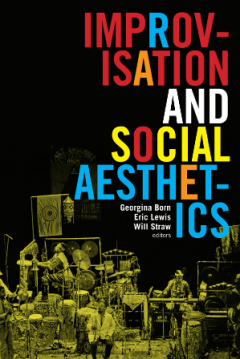
E-book Improvisation and Social Aesthetics
Addressing a wide range of improvised art and music forms—from jazz and cinema to dance and literature—this volume's contributors locate improvisation as a key site of mediation between the social and the aesthetic. As a catalyst for social experiment and political practice, improvisation aids in the creation, contestation, and codification of social realities and identities. Among other to…
- Edisi
- -
- ISBN/ISSN
- 9780822374015
- Deskripsi Fisik
- -
- Judul Seri
- -
- No. Panggil
- 781.36 BOR i

E-book Music – Media – History : Re-Thinking Musicology in an Age of Digi…
- Edisi
- -
- ISBN/ISSN
- 9783839451458
- Deskripsi Fisik
- 300 hlm
- Judul Seri
- -
- No. Panggil
- 780.7 SAN m
- Edisi
- -
- ISBN/ISSN
- 9783839451458
- Deskripsi Fisik
- 300 hlm
- Judul Seri
- -
- No. Panggil
- 780.7 SAN m
E-book Karawitan : Source Readings in Javanese Gamelan and Vocal Music
Look at the picture for a while, if you will, even if you cannot read theJavanese writing on it. It is a picture on a calendar for the months of Novemberand December 1978. I remember Judith and I were talking then about the like-ness between the structure of Javanese music, the way plots of shadow plays areput together, and the way cale…
- Edisi
- Vol. 2
- ISBN/ISSN
- 089148034X
- Deskripsi Fisik
- 423 hlm
- Judul Seri
- -
- No. Panggil
- 781.7 BEK k
E-book The Anthropology of Music
Ethnomusicology today is an area of study caught up in a fascination with itself. Although its roots can be traced back some eighty years, and its origin perhaps even earlier, it is only within the past ten or fifteen years that, under the impetus of younger scholars who had brought to it new concepts of theory, method, and application, it has taken a sudden forward surge. The result has been a…
- Edisi
- -
- ISBN/ISSN
- 0810106078
- Deskripsi Fisik
- 371 hlm
- Judul Seri
- -
- No. Panggil
- 780.1 MER t
E-book The Power of Music : An Exploration of the Evidence
The speed of change in electronic media in the latter part of the 20thcentury revolutionised access to and the use of music in people’s lives. Music can be accessed in many ways, through radio, CDs, DVDs, TV, tablets, SMART technologies, computers and phones, and can be downloaded to enable the creation of personal playlists. This can be achieved …
- Edisi
- -
- ISBN/ISSN
- 9781800644182
- Deskripsi Fisik
- 849 hlm
- Judul Seri
- -
- No. Panggil
- 780.1 HAL t

THE COMPLETE KEYBOARD PLAYER ABBA
- Edisi
- cet. 1
- ISBN/ISSN
- 979-22-2282-0
- Deskripsi Fisik
- 40hlm; ilus;23 x 32 cm
- Judul Seri
- -
- No. Panggil
- 785 BAK t
- Edisi
- cet. 1
- ISBN/ISSN
- 979-22-2282-0
- Deskripsi Fisik
- 40hlm; ilus;23 x 32 cm
- Judul Seri
- -
- No. Panggil
- 785 BAK t
 Karya Umum
Karya Umum  Filsafat
Filsafat  Agama
Agama  Ilmu-ilmu Sosial
Ilmu-ilmu Sosial  Bahasa
Bahasa  Ilmu-ilmu Murni
Ilmu-ilmu Murni  Ilmu-ilmu Terapan
Ilmu-ilmu Terapan  Kesenian, Hiburan, dan Olahraga
Kesenian, Hiburan, dan Olahraga  Kesusastraan
Kesusastraan  Geografi dan Sejarah
Geografi dan Sejarah